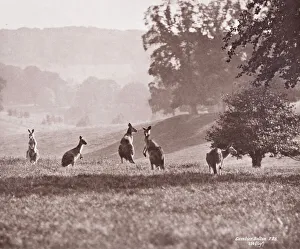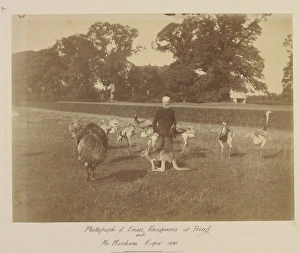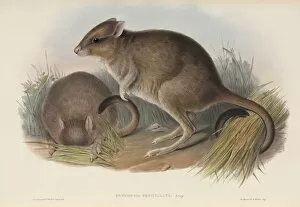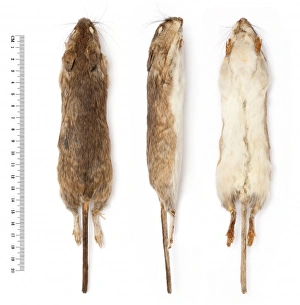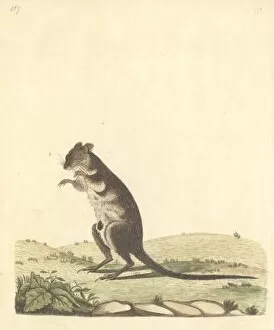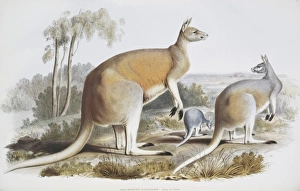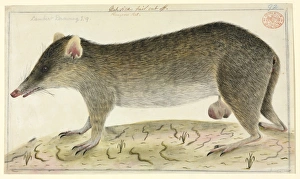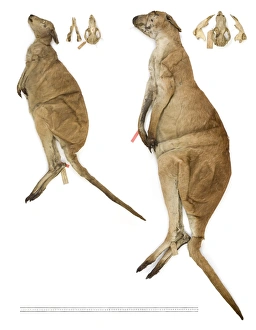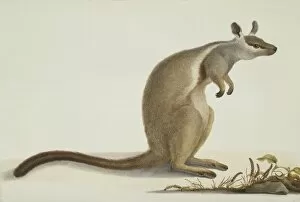Macropodiformes Collection
Macropodiformes, the fascinating group of kangaroos, emus, rheas, and other unique creatures, never ceases to amaze us with their incredible diversity and adaptability
All Professionally Made to Order for Quick Shipping
Macropodiformes, the fascinating group of kangaroos, emus, rheas, and other unique creatures, never ceases to amaze us with their incredible diversity and adaptability. Captured beautifully by Gambier Bolton in his photograph titled "Group of Kangaroos, " we witness the graceful movement and distinctive features that make these marsupials so captivating. Tring Park becomes a harmonious gathering ground for not only emus and rheas but also kangaroos as seen in this snapshot. The coexistence of these magnificent animals showcases nature's ability to create symbiotic relationships within its ecosystems. The brush-tailed bettongs depicted in artwork C016 / 6115 remind us of the intricate beauty found within this macropodiforme family. With their bushy tails and endearing faces, Bettongia penicillata steals our hearts effortlessly. Delving deeper into this enchanting world, we encounter Caloprymnus campestris - the Desert rat-kangaroo - an elusive creature whose existence is now sadly confined to history books. Its story serves as a reminder of the fragility of certain species within Macropodiformes. Amongst them all are various species belonging to the Macropus genus; they dominate Australia's landscapes with their iconic presence. From Macropus sp. , which encompasses multiple kangaroo species, to Macropus laniger - famously known as the great red kangaroo - each one possesses distinct characteristics that contribute to their survival in diverse environments. Not limited solely to kangaroos, Perameles nasuta emerges as another notable member of this group: a long-nosed bandicoot showcasing its remarkable adaptation skills while Wallabia bicolor or swamp wallaby thrives amidst wetlands where others may struggle. Intriguingly captured is a native spearing a kangaroo – an image that highlights both human interaction with these animals and the significance in indigenous culture.

